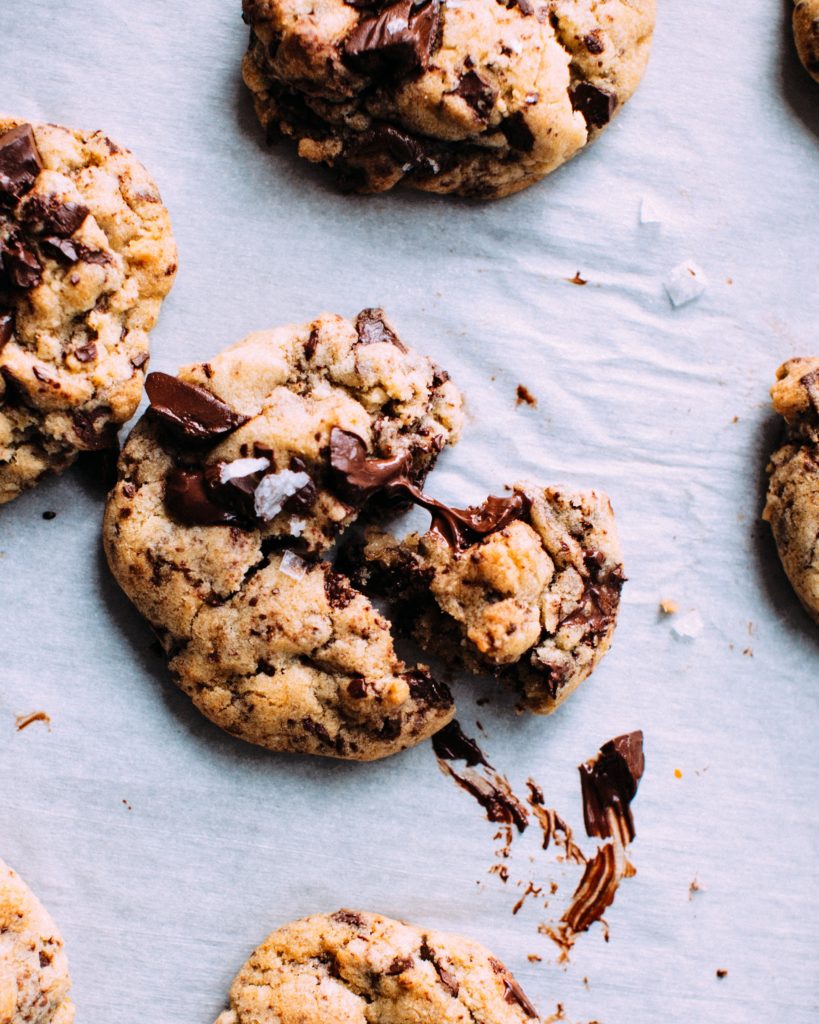All fields are required
Posted in Food Safety on May 26, 2019

Raw cookie dough. You either love it or you hate it. I happen to be smack firmly in the hate category. While I am certainly a germaphobe, that actually isn’t the reason why. I just really don’t like the flavor or texture. Don’t get me wrong, I can over indulge on a batch of cookies any day. After they are cooked. Why? Because there are hidden risks of Raw Cookie Dough.
But honestly, it just isn’t safe to consume raw cookie dough. Or any raw dough for that matter. Whether it be brownie, bread, or play-dough, resist the urge. The danger is real!
It’s Not All About the Eggs
I know what you are thinking. What if I make a batch of cookie dough and omit the eggs? Eggs are the bad ingredient. It probably doesn’t add too much flavor. It is the sugar and the vanilla that give it flavor. Flour to give it bulk. Omitting eggs should make it safe. That should do it, right?
Wrong. While yes, eggs are known for their Salmonella risk – there is more to this dangerous food. Consider the flour. Flour is a raw agricultural product made from grinding and sifting wheat into that soft powdery substance that is the root of most of our carb dreams. But being raw is where the danger lies. Without treatment used to kill harmful bacteria and germs like Escherichia coli (E. coli) it could be teaming with bugs that can make you sick.
I’m not even talking about recalled flour. Just regular old grocery store flour. Though one flour recall was linked to 63 patient cases in a 2016 outbreak.
Safe Cookie Baking Practices
The Center for Disease Control and Prevention (CDC) explains that there are certain practices you can incorporate into your kitchen activities when baking and cooking with flour or any other raw ingredients that may help reduce your risk of foodborne illness and bacterial exposure.
Symptoms to Look For
If you have been exposed to raw cookie dough or batter, you have potentially exposed yourself to several foodborne bacteria. If you start feeling sick, note any of the following symptoms and notify your healthcare professional of the potential source so that they can test you for specific bacteria that could lead to a more pointed and effective treatment.
Ecoli infection usually develops around 3 to 4 days after exposure. Symptoms include stomach cramps, diarrhea (sometimes bloody), and vomiting. Most people will recover within about a week. In some circumstances a more serious illness may develop, such as hemolytic uremic syndrome (HUS). HUS is a type of kidney failure that develops as a result of E. coli infection.
Salmonella infection usually develops around 6 to 48 hours after exposure, though it may take longer for some individuals. Symptoms include diarrhea, fever, and abdominal cramps and can last around 4 to 7 days. Many people will recover without medical attention, though the very young, the very old, and those with a compromised immune system risk more serious and even life-threatening illness.
There Will Always Be Someone to Sell Something If There is Someone to Buy It
If you want to buy it, there will always be someone to sell it to you. Want cookie dough anyway, despite the risks? Commercial food companies know this. This is why there are several raw cookie dough manufacturers out there making a product that is safe to eat.
Many products such as EatPastry Chocolate Cookie Dough, Hungryroot Almond Chickpea and Cookie Dough use flour alternative ingredients such as brown rice and garbanzo beans combined with an egg free recipe.
Other companies such as Sweet Megan Edible Allergen Free Chocolate Chip Cookie Dough go a step further and remove gluten, dairy, and soy from their product making it a school-safe treat. Many other companies such as Cookie Dough Café Gourmet Edible Chocolate Cookie Dough, Hampton Creek Just Cookie Dough Chocolate Chip, and Edoughble make great alternatives to eating your risky homemade raw cookie dough.
Still want to make your own? I am her for you. There is a way to make safe homemade raw cookie dough. It won’t be good for making real cookies, as this recipe is intended to be eaten raw.
Safe Raw Cookie Dough Recipe
While not an actual recipe (do I look like Betty Crocker?), this is more of a process to render your specific recipe safe.
Refrigerate any leftover cookie dough. The author indicates that as the raw cookie dough chills it can become stiff. Either let is sit at room temperature for about 15 minutes or nuke it in the microwave for about 10 seconds.
Enjoy! Safely 🙂
By: Heather Van Tassell, Contributing Writer (Non-Lawyer)